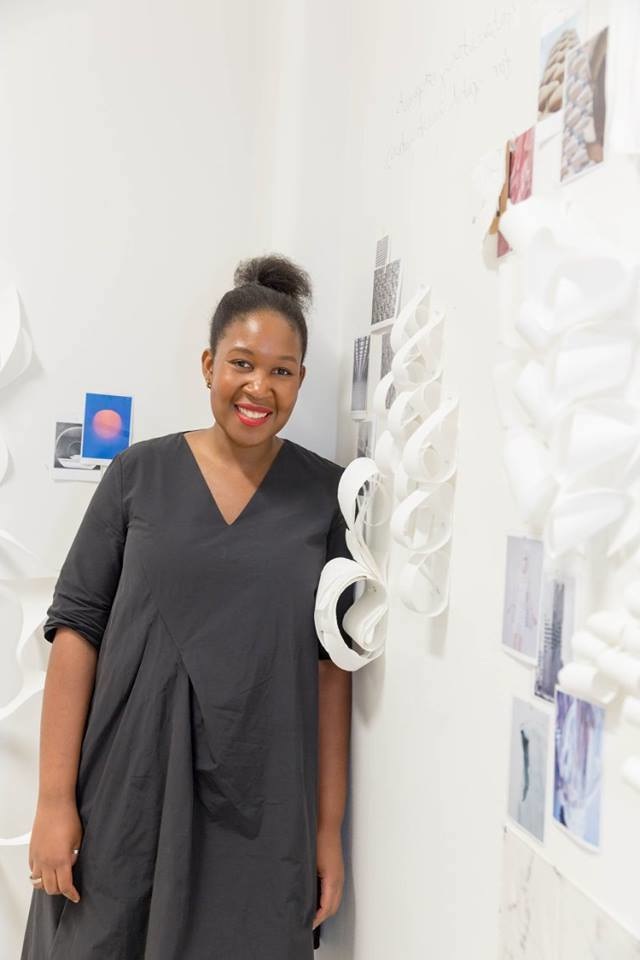Fashion as an industry can be incredibly destructive. I know because I spent a decade as a designer and witnessed how our demand for cheap apparel and accessories can destroy the planet and result in horrifying human rights violations. However, there are many incredible people worldwide working to make fashion more sustainable in numerous ways. At the TED Global conference in Tanzania this August I had the pleasure of hearing Natsai Audrey Chieza, founder and creative director of Faber Futures, speak about how her creative R&D studio conceptualizes, prototypes and evaluates the next generation of materials emerging through the convergence of biology, technology and design. Chieza. who is also designer in residence at Ginkgo Bioworks, has pioneered a system of dying and printing textiles using pigment-producing bacteria, which could offer a more ecological and resilient alternative to current industrial methods. I was so fascinated by the work she is doing I asked her the specific questions below. I truly believe it’s individuals like Chieza who are shaping our future for the better. Read on to learn more.
Q&A
What inspired you to create your research studio and help its designers and scientists understand how this technology could interact with society?
I studied Material Futures at Central Saint Martins, University of the Arts London, where I was instantly drawn to the intersection of tech, design, cultural studies and biology. Through working with John Ward, a synthetic biology professor at University College in London, we started to think about ways we could replace the traditional dyeing techniques damaging the environment with natural processes. It’s been known for some time that bacteria can produce pigments and through our research we realized we could apply it directly to fabric and started dyeing silk with bacteria. On a larger scale, my research inspired a broader question of what biology-driven design means and looks like in the textiles and fashion worlds.
What has been the hardest thing throughout your journey?
One of the technical challenges I’ve faced is learning how to scale this process for it to feasibly become the defacto method for the textiles and fashion industries. In my work, a bacteria-based dyeing process requires only seven ounces of water for a two-pound piece of habotai silk, while it takes 100L of water and a high amount of energy to dye the same amount of cotton fabric. The sustainability impacts of a bacteria-based dyeing process are clear and I’m now focused on how to scale the methods I have developed and what this means for the adoption of these processes by the fashion and textile industries – this is why I’ve partnered with Ginkgo Bioworks, an organism design company, as a designer in residence. Ginkgo’s team has an instinct for how biology is poised to completely revolutionize industries from product design to fashion to cosmetics and more. Its platform for organism design enables me to explore what this could look like on an industrial scale and conversely I am helping its team of designers and scientists understand how this technology could interact with society.
What’s one thing that everyone should be aware of when it comes to sustainability in fashion?
Through my work it’s become clear that biology will play a huge role in the design world and there will be major business implications, including sustainability, but also productivity and cost-effectiveness. It will be imperative for all major fashion houses to articulate their bio-strategy, and even consider having an in-house biologist, to help them stay nimble as technology advances beyond computers and software toward a biology-based approach. Biology offers a multitude of benefits when it comes to design and I encourage those in the fashion, textiles or design industries to start thinking about how you might put a “biological lens” on your work and explore what the implications might be. We are already seeing this shift with products like Bolt Threads’ synthetic spider silk necktie and Adidas and AMSilk’s bioengineered sneaker capturing consumers’ attention.
What advice would you give to other entrepreneurs who want to make a difference with their brands?
Don’t let what you think might be the “boundaries” stop you from exploring. I’m not a biologist by training, and in some ways this has empowered me to be more exploratory in my work since I didn’t know what the boundaries were. Every once in awhile, try to take a step back and look at your work from the perspective of someone who knows nothing about the topic. It will help shift your perception and allow you to inquire about new ways of approaching a situation.
How can people support your work?
If you’d like to understand more of my work, you can visit my website here. I’ll also be exhibiting my work at HUBweek 2017 – an innovation festival in Boston celebrating art, science and technology – if you’d like to come see my work and hear about the progress I’ve made during my residency at Ginkgo this summer.
—


